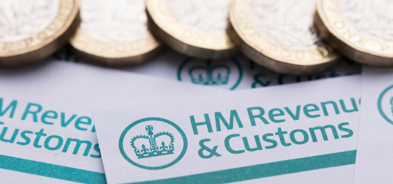Are pensions for children bonkers or brilliant?
It’s likely that you’ve never considered saving into a child pension before. But if you start saving into a junior SIPP (Self-invested Personal Pension) for a child, it might just end up being one of the greatest financial gifts you ever give.
The value of investments can fall as well as rise and that you may not get back the amount you originally invested.
Nothing in these briefings is intended to constitute advice or a recommendation and you should not take any investment decision based on their content.
Any opinions expressed may change or have already changed.
Written by Lee Dooley
Published on 02 Jun 20173 minute read
How much can I contribute to a child pension?
We know that saving into a pension for a child seems counterintuitive. The usual reasons for saving for children involve them using the money for pivotal life moments, such as university, a wedding or putting a deposit on their first home.
But retirement is no less pivotal, it just comes far later in life. All you need to do is look at the numbers to see how a child pension adds up. You can contribute up to £2,880 a year into a pension for a child. The state still tops up this contribution by £720, to £3,600 in total, even though the child doesn’t earn an income. Over 18 years, your total outlay would be £51,840 (topped up to £64,800 in total).
A potential £447,799 after 40 years
Assuming an average compound annual growth rate of 6% (net of costs), the child would have £120,017 in their pension after 18 years. What’s more, when you leave it invested, make no further contributions and still assume the annual growth rate of 6% each year (after costs), the pension would be worth £447,799, 40 years after the first investment made when the child was born.
A child pension is also appealing if you want to save for a child but you’re concerned about how they might use the money. Junior ISAs – a popular choice for saving for children – give children access to their money at age 18, when it becomes a standard ISA.
When you make regular investments into a pension for children, you can potentially limit your future Inheritance Tax liability. This is because gifts to a child’s pension are often covered by an Inheritance Tax exemption, so could be classified as outside of your estate – as these rules are often complex, please speak to a financial planner to find out more about estate planning. We offer financial planning through Tilney.
One drawback is the fact that pension rules often change – and considering the extended timeframe before a child can access their money, it’s likely that pension rules will have changed significantly. The age at which they can access it (and how they access it) could be different, but the pension pot that’s built up should still be very attractive, regardless of any changes to the rules.
On Junior ISAs
We do suggest that you also make use of the Junior ISA when saving for a child. Junior ISAs come with an allowance of £4,128 for 2017/18 that you can use to save tax-free for a child, in the same way that you can with a regular ISA. Junior ISAs let you give children the best start possible in life, as they can access the money from a much earlier age than child pensions.
Over 18 years you could potentially invest £86,690 into Junior ISAs. Assuming the average compound annual growth rate of 6% (net of costs), in 18 years, £155,614 would have accumulated. Combine this with a child pension and the child would have a considerable financial gift, which takes a huge burden off them.
You can open a Junior ISA online in minutes. The Bestinvest Junior ISA is great value, with fees of just 0.4% a year or less.
The Bestinvest Junior SIPP
You can open a SIPP on behalf of a child through Bestinvest. Our Junior SIPP is great value, with fees of just 0.3% or less. You need to open a child pension in a slightly different way to a regular pension so please call us on 020 7189 2400 and we can guide you through it, or just email us at best@bestinvest.co.uk and we’ll be in touch.
When you buy a Ready-made Portfolio for your Junior SIPP, the SIPP will come without service fees. Contact us using the details above to find out more.
Please keep in mind that SIPPs are not suitable for everyone. If you don’t want to invest across different asset classes or don’t think you will make use of the investment choices that SIPPs give you then a SIPP might not be right for you. Please contact us for guidance or advice if you are unsure whether a SIPP is right for you.
Self-directed investors should regularly review their SIPP portfolio, or seek professional advice, to ensure that the underlying investments remain in line with their pension objectives.
Please note that the figures shown are examples and are not guaranteed. What you will get back depends on how your investment grows and the tax treatment of the investment. Charges may vary. Do not forget that inflation would reduce what you could buy in the future with the amounts shown. This article does not constitute personal advice. Please also see the information below.
Get insights and events via email
Receive the latest updates straight to your inbox.
You may also like…


Investing


